
The Untamed Wilderness of Gila National Forest
Discover the untouched beauty and rich history of Gila National Forest, a haven for hikers, wildlife enthusiasts, and history buffs alike in New Mexico.
Gila National Forest in New Mexico is a sprawling expanse of natural beauty and rugged terrain. Spanning over 3.3 million acres, this forest is one of the largest in the United States. Here, visitors can explore a variety of landscapes, from dense woodlands to open meadows and towering cliffs. The forest is also home to the Gila Wilderness, the first designated wilderness area in the world, offering a haven for those seeking solitude and unspoiled nature. The forest is a paradise for hikers and outdoor enthusiasts. With over 1,500 miles of trails, there is something for everyone, from casual strolls to challenging backcountry treks. The Continental Divide Trail, which spans from Mexico to Canada, cuts through the heart of the forest, providing breathtaking views and a unique experience for serious hikers. Additionally, there are several hot springs scattered throughout the area, perfect for a relaxing soak after a long day of exploring. Wildlife is abundant in Gila National Forest. Visitors may encounter a range of animals, including elk, deer, black bears, and even the elusive Mexican gray wolf. Birdwatchers will be delighted with the variety of species that call this forest home. The forest's rivers and streams offer excellent fishing opportunities, with native trout being a popular catch. History buffs will appreciate the ancient cliff dwellings of the Mogollon people, which date back to the 13th century. The Gila Cliff Dwellings National Monument provides a fascinating glimpse into the lives of these early inhabitants. The area also has a rich mining history, with several ghost towns and old mines to explore.
Local tips in Gila National Forest
- Visit the Gila Cliff Dwellings early in the day to avoid crowds and the midday heat.
- Bring plenty of water and sun protection, as the weather can be unpredictable and shade is limited in some areas.
- Check for trail conditions and possible closures before setting out on a hike.
- If you plan on soaking in the hot springs, bring a swimsuit and a towel.
- Wildlife sightings are best early in the morning or late in the afternoon.
- Consider hiring a local guide for a more in-depth exploration of the forest's trails and historical sites.
The Untamed Wilderness of Gila National Forest
Gila National Forest in New Mexico is a sprawling expanse of natural beauty and rugged terrain. Spanning over 3.3 million acres, this forest is one of the largest in the United States. Here, visitors can explore a variety of landscapes, from dense woodlands to open meadows and towering cliffs. The forest is also home to the Gila Wilderness, the first designated wilderness area in the world, offering a haven for those seeking solitude and unspoiled nature. The forest is a paradise for hikers and outdoor enthusiasts. With over 1,500 miles of trails, there is something for everyone, from casual strolls to challenging backcountry treks. The Continental Divide Trail, which spans from Mexico to Canada, cuts through the heart of the forest, providing breathtaking views and a unique experience for serious hikers. Additionally, there are several hot springs scattered throughout the area, perfect for a relaxing soak after a long day of exploring. Wildlife is abundant in Gila National Forest. Visitors may encounter a range of animals, including elk, deer, black bears, and even the elusive Mexican gray wolf. Birdwatchers will be delighted with the variety of species that call this forest home. The forest's rivers and streams offer excellent fishing opportunities, with native trout being a popular catch. History buffs will appreciate the ancient cliff dwellings of the Mogollon people, which date back to the 13th century. The Gila Cliff Dwellings National Monument provides a fascinating glimpse into the lives of these early inhabitants. The area also has a rich mining history, with several ghost towns and old mines to explore.
When is the best time to go to Gila National Forest?
Iconic landmarks you can’t miss
Bandelier National Monument
Explore ancient cliff dwellings and stunning landscapes at Bandelier National Monument, a natural and cultural gem in New Mexico.

Gila Cliff Dwellings National Monument
Discover the rich history and stunning landscapes at Gila Cliff Dwellings National Monument, a cultural treasure in the heart of New Mexico.

Gila Visitor Center
Discover the Gila Visitor Center: Your gateway to the breathtaking landscapes and rich history of Gila National Forest in New Mexico.

Gila Cliff Dwellings Bookstore Western National Parks Association
Discover the past at Gila Cliff Dwellings Bookstore, a unique blend of literature and archaeology in New Mexico's stunning landscape.

Middle Fork Trail (#157) trailhead
Explore the breathtaking Middle Fork Trail in New Mexico, a must-visit hiking area for nature lovers and outdoor enthusiasts seeking adventure.

Turkey Creek Hot Springs
Experience the natural serenity of Turkey Creek Hot Springs, a tranquil retreat nestled in the New Mexico wilderness, perfect for relaxation and outdoor adventure.

Gila Wilderness
Explore the stunning landscapes and rich history of Gila Wilderness, a nature preserve in New Mexico, perfect for hiking, wildlife spotting, and relaxation.

Unmissable attractions to see
Elephant Butte Lake State Park
Explore the natural beauty and outdoor activities at Elephant Butte Lake State Park, a premier destination for relaxation and adventure in New Mexico.

Lincoln National Forest
Experience the breathtaking beauty of Lincoln National Forest, where adventure and tranquility await in the heart of New Mexico's stunning landscapes.
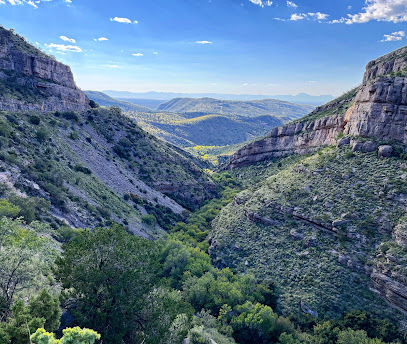
Catwalk Recreation Area
Explore the breathtaking trails and unique landscapes of Catwalk Recreation Area, a hidden gem in Gila National Forest perfect for outdoor adventures and relaxation.

Gila Visitor Center
Explore the Gila Visitor Center in New Mexico's Gila National Forest for a gateway to nature and adventure, rich in history and biodiversity.

Gila Hot Springs and Campground
Discover the serene beauty of Gila Hot Springs and Campground, a natural oasis of relaxation and adventure in Silver City, New Mexico.
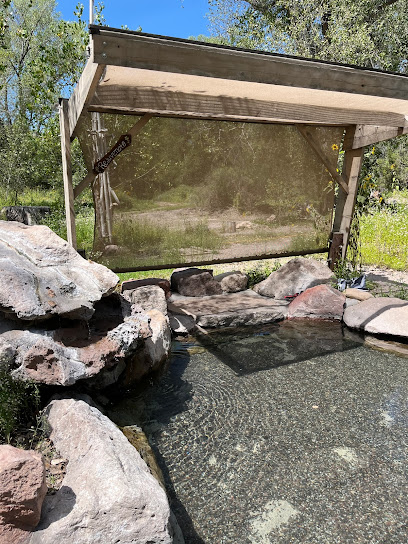
Lake Roberts
Explore the breathtaking beauty of Lake Roberts in New Mexico's Gila National Forest, where adventure and tranquility meet in stunning natural surroundings.

Grapevine Campground
Discover the serene beauty of Grapevine Campground in Silver City, a perfect retreat for nature lovers and outdoor adventurers.

Pioneer Store Museum
Explore the rich heritage of the American Southwest at the Pioneer Store Museum in Winston, New Mexico, a captivating journey through pioneer history.

Becky's Gila Hotsprings Ranch
Discover tranquility at Becky's Gila Hotsprings Ranch, where horseback riding and natural hot springs await amidst stunning New Mexico landscapes.

Forks Campground
Discover the beauty of Forks Campground in Silver City, NM, a perfect retreat for camping and outdoor adventures surrounded by nature.

Ben Lilly Memorial
Discover the Ben Lilly Memorial in New Mexico - a serene tribute to a legendary hunter amidst breathtaking wilderness and rich history.

Geronimo Trail Guest Ranch
Discover the charm of the Wild West at Geronimo Trail Guest Ranch, where adventure and relaxation blend seamlessly in New Mexico's stunning landscapes.
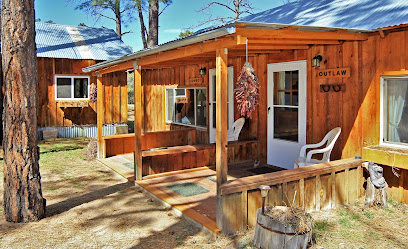
Lower Scorpion Campground
Experience the tranquility of Lower Scorpion Campground in the Gila National Forest, a perfect retreat for nature lovers and outdoor adventurers.

Upper Scorpion Campground
Experience the serene beauty of Upper Scorpion Campground, an outdoor haven nestled in the Gila National Forest of New Mexico, perfect for camping and adventure.

Dipping Vat Campground
Discover tranquility and adventure at Dipping Vat Campground, a serene retreat in the heart of Gila National Forest, New Mexico.

Essential places to dine
Sparkys
Discover the best burgers and barbecue at Sparky's in Hatch, NM - where flavor meets tradition!

The Original Owl Bar & Cafe
Experience local flavors at The Original Owl Bar & Cafe in San Antonio – home of delicious hamburgers and vibrant atmosphere.
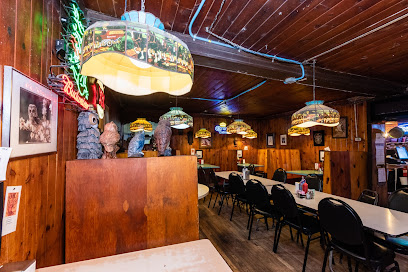
Adobe Springs
Experience authentic American cuisine at Adobe Springs in Silver City – where local flavors meet warm hospitality in every dish.

Wendy's
Discover Wendy's in Deming: Fresh burgers and fast service await at this budget-friendly fast food destination.

Wrangler's Bar & Grill
Experience authentic American cuisine at Wrangler's Bar & Grill in Silver City - your go-to spot for delicious grilled meals.

Arrey Cafe
Experience authentic New Mexican cuisine at Arrey Cafe—where delicious food meets warm hospitality in a charming setting.

Blake's Lotaburger
Experience the best of American fast food at Blake's Lotaburger in Bayard – home of the juiciest burgers and hearty breakfasts.

Q's Southern Bistro
Experience the rich flavors of Southern cuisine at Q's Southern Bistro, where every meal is crafted with passion in Silver City.

Arby's
Discover delicious fast food delights at Arby's in Deming – where classic American flavors meet quick service.

Black Bird Saloon
Discover authentic American cuisine at Black Bird Saloon in Los Cerrillos - where local charm meets delicious flavors.

The Patio Restaurant
Experience flavorful fast-food delights at The Patio Restaurant in Hurley, NM – where comfort meets quality in every bite.

Domino's Pizza
Delight in delicious pizza and wings at Domino's Pizza in Silver City - perfect for travelers seeking tasty and affordable meals.

Tumbleweeds Diner
Discover authentic New Mexican comfort food at Tumbleweeds Diner in Magdalena - where every meal tells a story.

Forrest's Pizza
Discover mouth-watering pizzas at Forrest's Pizza in Silver City, NM—your ultimate takeout destination for delicious flavors.

Restaurant del Sol
Experience authentic New Mexican cuisine at Restaurant del Sol in San Lorenzo - where local flavors meet culinary creativity.

Markets, malls and hidden boutiques
Walmart Supercenter
Experience the convenience of one-stop shopping at Walmart Supercenter in Silver City, offering groceries, clothing, electronics, and more.

Comfort Inn Near Gila National Forest
Experience comfort and adventure at Comfort Inn Near Gila National Forest, your ideal base for exploring New Mexico's breathtaking landscapes.

Gila Cliff Dwellings Bookstore Western National Parks Association
Discover the Gila Cliff Dwellings Bookstore, where literature meets archaeology in the scenic Mimbres Valley of New Mexico.
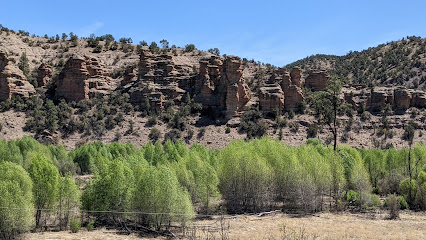
Gila National Forest
Explore the enchanting landscapes of Gila National Forest, a haven for outdoor enthusiasts and nature lovers in the heart of New Mexico.

Gila National Forest Supervisors Office
Discover the breathtaking beauty and recreational opportunities at Gila National Forest, a true natural treasure in New Mexico.

Essential bars & hidden hideouts
The Original Owl Bar & Cafe
Experience the unique flavors of The Original Owl Bar & Cafe in San Antonio, NM, where delicious hamburgers and a cozy atmosphere await.

Comfort Inn Near Gila National Forest
Experience the comfort of home at Comfort Inn Near Gila National Forest, your gateway to outdoor adventures and local charm in Silver City, NM.

Gila National Forest
Explore the breathtaking landscapes and rich biodiversity of Gila National Forest, a natural paradise in New Mexico for outdoor enthusiasts and adventurers.

Local Phrases about Gila National Forest
-
- HelloHowdy
[HOU-dee] - GoodbyeAdios
[ah-dee-OHS] - YesYup
[YUHP] - NoNope
[NOHP] - Please/You're welcomePlease/No problem
[PLEEZ/noh PRO-blem] - Thank youThanks
[THANKS] - Excuse me/SorryPardon me/My bad
[PAR-dun MEE/my BAD] - How are you?How ya doin'?
[HOW yuh DOO-in] - Fine. And you?Good. And you?
[GOOD. And yuh?] - Do you speak English?Ya speak English?
[Yuh speak ING-lish?] - I don't understandI don't get it
[I don't GET it]
- HelloHowdy
-
- I'd like to see the menu, pleaseCan I check out the menu?
[Can I chek out the MEH-nyoo?] - I don't eat meatI don't eat meat
[I don't eat meet] - Cheers!Cheers!
[CHEERS!] - I would like to pay, pleaseI'll pay now, thanks
[I'll pay now, thanks]
- I'd like to see the menu, pleaseCan I check out the menu?
-
- Help!Help!
[Help!] - Go away!Get lost!
[Get lost!] - Call the Police!Call the cops!
[Call the cops!] - Call a doctor!Get a doc!
[Get a doc!] - I'm lostI'm lost
[I'm lost] - I'm illI'm sick
[I'm sick]
- Help!Help!
-
- I'd like to buy...I wanna buy...
[I WAN-na buy...] - I'm just lookingJust browsing
[Just BROH-zing] - How much is it?How much?
[How much?] - That's too expensiveThat's pricey
[That's PRICE-ee] - Can you lower the price?Can ya drop the price?
[Can ya DROP the price?]
- I'd like to buy...I wanna buy...
-
- What time is it?What time is it?
[What time is it?] - It's one o'clockIt's one
[It's one] - Half past (10)Half past ten
[Half past ten] - MorningMorning
[Morning] - AfternoonAfternoon
[Afternoon] - EveningEvening
[Evening] - YesterdayYesterday
[Yesterday] - TodayToday
[Today] - TomorrowTomorrow
[Tomorrow] - 1One
[WUN] - 2Two
[TOO] - 3Three
[THREE] - 4Four
[FOR] - 5Five
[FIVE] - 6Six
[SIX] - 7Seven
[SEV-en] - 8Eight
[AIT] - 9Nine
[NINE] - 10Ten
[TEN]
- What time is it?What time is it?
-
- Where's a/the...?Where's the...?
[Where's the...?] - What's the address?What's the address?
[What's the address?] - Can you show me (on the map)?Can you show me (on the map)?
[Can you show me (on the map)?] - When's the next (bus)?When's the next bus?
[When's the next bus?] - A ticket (to ....)A ticket to ...
[A ticket to ...]
- Where's a/the...?Where's the...?
History of Gila National Forest
-
The Gila National Forest is home to the remnants of the Mogollon culture, which thrived between 200 AD and 1450 AD. These ancient people are known for their unique cliff dwellings, such as those found in the Gila Cliff Dwellings National Monument. The Mogollon people built their homes within the natural caves of the cliffside, creating a complex and sustainable living environment that offers insight into their daily lives and social structure.
-
European exploration of the Gila National Forest area began in the 16th century with Spanish expeditions. Notably, Francisco Vásquez de Coronado passed through the region in the 1540s in search of the fabled Seven Cities of Gold. These early expeditions laid the groundwork for further exploration and eventual settlement by European colonizers.
-
The Gila Wilderness was a significant stronghold for the Apache people, particularly during the Apache Wars in the late 19th century. Leaders such as Geronimo and Cochise utilized the rugged terrain of the forest to evade capture by U.S. military forces. The history of the Apache in the Gila National Forest is marked by resilience and the struggle to protect their homeland.
-
Gila National Forest was officially established in 1905, making it one of the oldest national forests in the United States. The creation of the forest was part of a broader movement to conserve natural resources and protect the unique landscapes of the American West. The forest was named after the Gila River, which flows through the region and provides vital water resources.
-
In 1924, the Gila Wilderness was designated as the first federally recognized wilderness area in the United States, thanks to the efforts of conservationist Aldo Leopold. Leopold's vision for the Gila Wilderness was to create a space where nature could exist without human interference, serving as a model for future wilderness preservation efforts across the country.
-
The Gila National Forest has a rich history of mining and logging, dating back to the late 19th and early 20th centuries. Gold, silver, and copper were extensively mined in the region, leading to the establishment of several mining towns. Logging activities also played a significant role in the local economy, although these industries have since declined due to environmental regulations and resource depletion.
-
Today, the Gila National Forest is a testament to ongoing conservation efforts. It is home to a diverse array of flora and fauna, including endangered species such as the Mexican gray wolf. Modern conservation initiatives focus on preserving the natural beauty and ecological integrity of the forest while supporting sustainable recreation and tourism.
Gila National Forest Essentials
-
Gila National Forest is located in southwestern New Mexico. The nearest major airport is El Paso International Airport (ELP) in Texas, about 150 miles away. From the airport, you can rent a car and drive to the forest, which takes approximately 3 hours. Another option is the Albuquerque International Sunport (ABQ), located about 200 miles from the forest, which is a 4-hour drive. Public transportation options are limited, so renting a car is highly recommended for flexibility and ease of access.
-
Once you arrive, the best way to explore Gila National Forest is by car. Roads within the forest range from paved to rough dirt roads, so a vehicle with good ground clearance is advisable. There are also several trailheads for hiking, and getting around on foot is common for exploring deeper parts of the forest. There are no public transportation services within the forest, though guided tours may be available for specific attractions like the Gila Cliff Dwellings.
-
The official currency is the US Dollar (USD). Credit and debit cards are widely accepted in nearby towns such as Silver City and Truth or Consequences, but it's a good idea to carry some cash, especially when venturing into more remote areas of the forest where card payment facilities might not be available. ATMs are available in the larger towns but are scarce within the forest itself.
-
Gila National Forest is generally safe for tourists, but standard precautions should be taken. When hiking, always stay on marked trails and carry a map, compass, and sufficient water. Be aware of wildlife, including bears and mountain lions, and store food properly. There are no specific high-crime areas targeting tourists, but it's always best to stay vigilant and avoid leaving valuables in plain sight in your vehicle.
-
In case of an emergency, dial 911 for immediate assistance. It's important to carry a first-aid kit and know the location of the nearest ranger station. The forest has limited cell phone service, so consider carrying a satellite phone or personal locator beacon. Travel insurance that covers medical emergencies and evacuation is highly recommended. For non-emergency medical issues, the nearest healthcare facilities are in Silver City.
-
Fashion: Do wear appropriate outdoor clothing and sturdy hiking boots. Layers are advisable due to variable weather. Don't wear flip-flops or open-toed shoes on trails. Religion: Do respect Native American sites and artifacts. Public Transport: Do note that there is no public transport within the forest. Renting a car is essential. Greetings: Do greet fellow hikers and visitors with a friendly nod or hello. Eating & Drinking: Do pack out all trash and food waste. Don't leave food unattended as it can attract wildlife.
-
To experience Gila National Forest like a local, visit the hot springs scattered throughout the area, such as those near the Gila River. Engage with rangers and local guides to learn about the forest's history and best hidden spots. Don't miss the Gila Cliff Dwellings, a historical site offering a glimpse into the lives of the Mogollon people who lived there over 700 years ago. For a unique experience, hike to the top of Signal Peak for panoramic views of the forest.
Nearby Cities to Gila National Forest
-
Things To Do in Socorro
-
Things To Do in Las Cruces
-
Things To Do in White Sands
-
Things To Do in El Paso
-
Things To Do in Ruidoso
-
Things To Do in Gallup
-
Things To Do in Bisbee
-
Things To Do in Albuquerque
-
Things To Do in Tucson
-
Things To Do in Bernalillo
-
Things To Do in Winslow
-
Things To Do in Gilbert
-
Things To Do in Mesa
-
Things To Do in Chandler
-
Things To Do in Scottsdale













